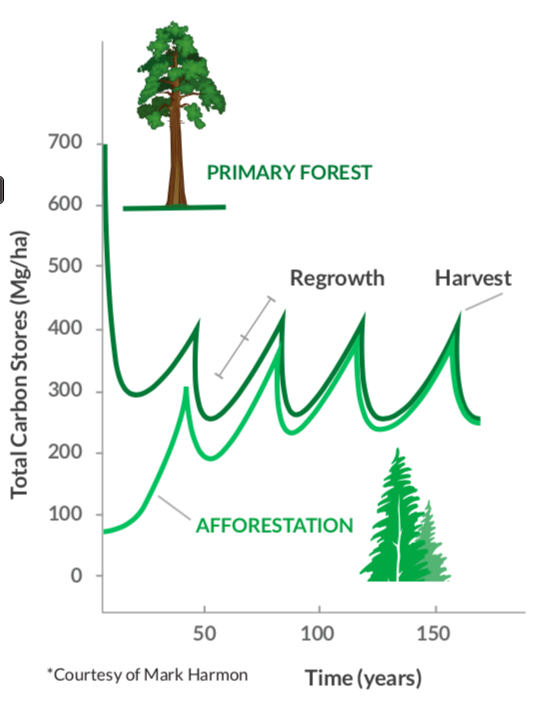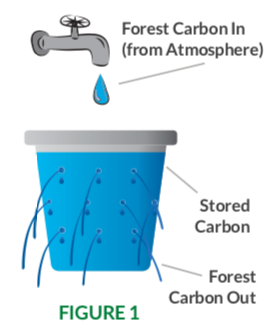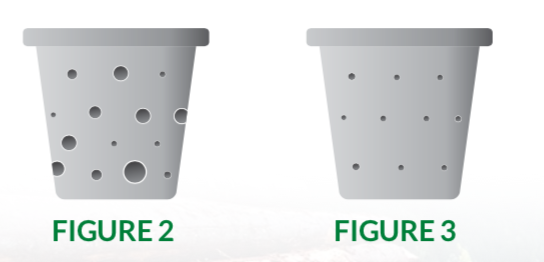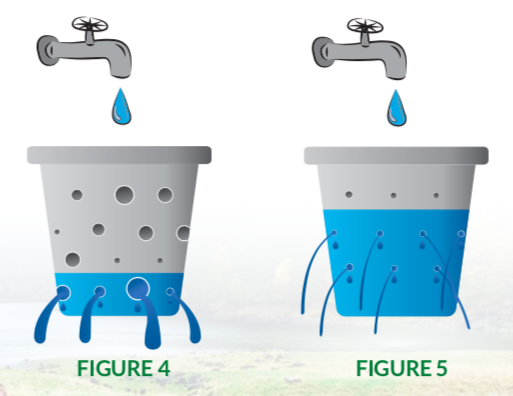As the name suggests, forest carbon refers to all of the carbon stored in a forest, including what’s above ground in live and dead trees and other vegetation as well as carbon stored below ground in the soil and the root mass of trees.
It’s relatively straightforward to visualize how logging impacts forest carbon at the level of an individual stand:

This chart represents two different starting conditions: an old-growth forest (dark green line) and an agricultural field where afforestation occurs (light green line). In the former case, forest carbon starts high and drops steeply with the initial timber harvest. In the latter, carbon starts low and builds for several decades. The forest stand represented here is logged once every 40 years on a sustained-yield basis where tree growth and timber removals are in balance. The level of forest carbon drops with each harvest and then builds back up before the pattern repeats.
The picture gets more complicated at the landscape level where numerous stands are being managed simultaneously. Here’s an analogy to aid in understanding how in such a scenario different approaches to forest management can impair or enhance the forest’s capacity to store carbon. Visualize the managed forest as a bucket and forest carbon as the water inside it. The landscape is made up of multiple stands that have been logged at different times and are in different stages of regrowth: some are taking up carbon and some are releasing it. The challenge is to determine how all of these offsetting inputs and outputs influence what is happening to overall carbon stores – and we need to do that to figure out the differing effects of different approaches to forest management.
Carbon stores are highest in mature forests where there is little or no logging: the water level in the bucket is at or near the top. This level is never static, however. The bucket has leaks: trees and other vegetation are constantly dying and rotting, releasing some carbon into the atmosphere, but also cycling nutrients, which enhances forest productivity and carbon storage capacity. But a bucket can hold water even if it has leaks as long as water is being poured into it. At the same time that carbon is escaping from the forest, new carbon is constantly being pulled from the atmosphere into the bucket. At the landscape level, it will remain fairly constant over time. [Figure 1]

When the forest is logged, it impacts both the amount coming into the bucket and the amount leaking out, but the larger impact is on the leakiness. The more holes you have, and the bigger they are, the leakier the bucket; and the leakier the bucket, the less carbon it will store. The number of holes is related to the frequency of logging and the size of the holes is related to its intensity or severity: the large clearcuts characteristic of conventional industrial forestry can be pictured as bigger leaks and the relatively frequent harvests (i.e. short rotations) can be pictured as more numerous leaks. [Figure 2]
On the other hand, less intensive, more selective logging that occurs less frequently (i.e. longer rotations) can be pictured as smaller, less numerous ones. [Figure 3]

If trees are replanted or regenerate naturally in logged areas, they absorb carbon as they grow – more carbon flows in, less escapes and the level in the bucket gradually builds back up. But each time logging occurs, the bucket becomes more leaky and the carbon level falls back down – and the more intensive and frequent the logging, the farther it will fall and the lower the average level will be. [Figure 4]
If climate-friendlier forestry is practiced, the holes are smaller and less frequent and the bucket is less leaky. Less carbon escapes and the average level will build higher and remain so as long as the management system is continued. Forest carbon stores are significantly increased! [Figure 5]

Increasing the extent, frequency or intensity of logging cannot lead to more forest carbon being stored. Since the goal is to combat climate change by reducing emissions and removing excess carbon from the atmosphere, what matters most is whether forest management and wood use results in net increases in carbon storage. Wood use will contribute to combatting climate change only if we protect more forest and implement climate-friendlier forestry.